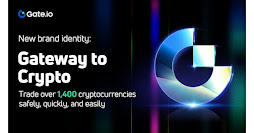How can blockchain be used in identity management?
Blockchain technology has the potential to revolutionize identity management by providing a secure and decentralized platform for managing and protecting sensitive identity information. Here are a few ways in which blockchain can be used for identity management:
1. Self-Sovereign Identity: Blockchain can enable self-sovereign identity, where individuals own and control their own identity information. This can be achieved by creating an encrypted and secure digital identity that is cryptographically linked to a public key on the blockchain. Individuals can then use this identity to authenticate themselves and access services without the need for a centralized authority.
2. Decentralized Authentication: With blockchain, authentication and identification can be decentralized and trustless. By using public-private key pairs, users can prove their identity without having to rely on centralized authorities like governments or corporations. This can help minimize the risk of identity theft or data breaches.
3. Permissioned Data Sharing: Blockchain can enable secure and selective data sharing, allowing users to share only the necessary data with specific parties. This can be achieved by encrypting and storing identity information on the blockchain, and then sharing the relevant information with authorized parties on a need-to-know basis.
4. Improved Privacy: Blockchain can provide greater privacy and anonymity by allowing users to create multiple pseudonymous identities. This can help protect sensitive information from unauthorized access or surveillance.
5. Anti-Fraud Measures: Blockchain's immutability and tamper-proof nature can help prevent identity fraud and theft by providing an auditable record of all identity-related activities and transactions.
Overall, blockchain-based identity management solutions can provide greater security, privacy, and control over personal data, while also reducing the risk of identity theft and fraud. By leveraging the trustless and decentralized nature of blockchain, individuals and organizations can create more secure and reliable identity systems that put users in control of their own data.
1. Self-Sovereign Identity: Blockchain can enable self-sovereign identity, where individuals own and control their own identity information. This can be achieved by creating an encrypted and secure digital identity that is cryptographically linked to a public key on the blockchain. Individuals can then use this identity to authenticate themselves and access services without the need for a centralized authority.
2. Decentralized Authentication: With blockchain, authentication and identification can be decentralized and trustless. By using public-private key pairs, users can prove their identity without having to rely on centralized authorities like governments or corporations. This can help minimize the risk of identity theft or data breaches.
3. Permissioned Data Sharing: Blockchain can enable secure and selective data sharing, allowing users to share only the necessary data with specific parties. This can be achieved by encrypting and storing identity information on the blockchain, and then sharing the relevant information with authorized parties on a need-to-know basis.
4. Improved Privacy: Blockchain can provide greater privacy and anonymity by allowing users to create multiple pseudonymous identities. This can help protect sensitive information from unauthorized access or surveillance.
5. Anti-Fraud Measures: Blockchain's immutability and tamper-proof nature can help prevent identity fraud and theft by providing an auditable record of all identity-related activities and transactions.
Overall, blockchain-based identity management solutions can provide greater security, privacy, and control over personal data, while also reducing the risk of identity theft and fraud. By leveraging the trustless and decentralized nature of blockchain, individuals and organizations can create more secure and reliable identity systems that put users in control of their own data.

Comments
Post a Comment